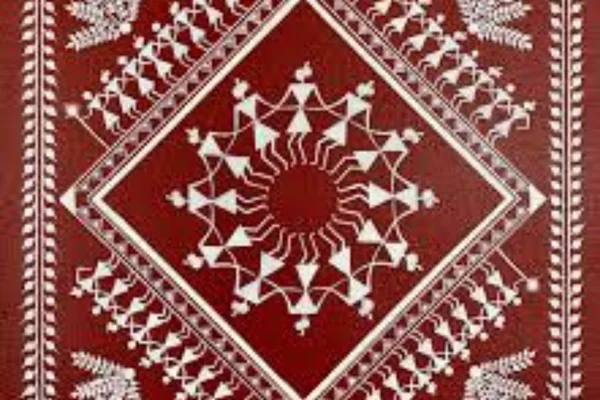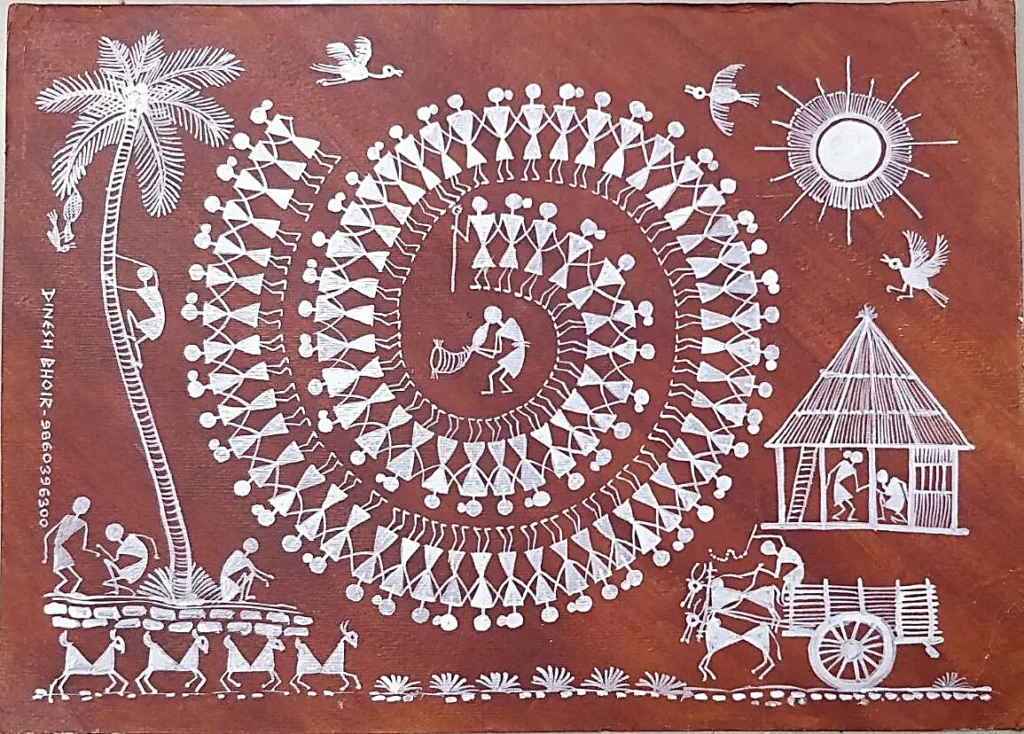An exhibition in Delhi recently showcased the rich Warli paintings, depicting the daily life and traditions of tribal communities in Maharashtra, India.
About the Warli Paintings:
- The Warli Paintings features exuberant geometric patterns inspired by nature, such as circles for the sun and moon, triangles for trees and mountains, and squares for sacred enclosures.
- Their origin dates back to 2500-3000 BCE.
- Originating from the Sahyadri Mountains in Maharashtra, Warli was traditionally practiced by Suvasinis, women of the Warli tribe.
- They were initially done on the walls of village huts, using natural materials like rice paste and cow dung for the base.
- The Mashe family is one of the prominent group of artists, who are often associated with this art.
- They serve the social function of recording important events and transmitting local stories visually.
Features:
- The themes of Warli paintings revolve around the daily life and rituals of the Warli tribe, depicting scenes like farming, hunting, and festivals.
- They depict rural life, tribal customs, and traditions, using minimalistic geometric patterns like triangles, circles, and lines.
- Traditionally, Warli paintings are done on a red or ochre background, using white pigment made from a mixture of rice paste and water.
- The artists use a bamboo stick chewed at the end to create fine lines and intricate patterns.
Evolution of Warli Art:
- Until the 1970s, Warli art focused on joyous occasions like marriages and was confined to mud house walls.
- Access to paper sheets enabled artists to transition Warli from ritualistic paintings to secular picturization.
- It now reflects social injustices and power imbalances, enabling artists to express personal and social predicaments.
About the Warli Tribe:
- The Warli Tribe is an indigenous Adivasi community that resides in the mountainous and coastal areas of Maharashtra, Gujarat, and surrounding regions in India.
- They have a unique art form, which is characterized by simple, geometric patterns depicting scenes from daily life, nature, and rituals.
- They traditionally follow an agrarian lifestyle, relying on farming and animal husbandry as their primary occupation.
- They grow crops like rice, millet, and pulses.
- They follow animistic beliefs, worshiping a mother goddess named Palaghata.
- They generally speak a language called Varli, which belongs to the southern zone of the Indo-Aryan languages.
- They also make a musical instrument called Tarpa out of bamboo, which is native to the community.
- They perform the Tarpa dance during festivals and new harvest, in which both men and women participate.
Ref: Source
| UPSC IAS Preparation Resources | |
| Current Affairs Analysis | Topperspedia |
| GS Shots | Simply Explained |
| Daily Flash Cards | Daily Quiz |



